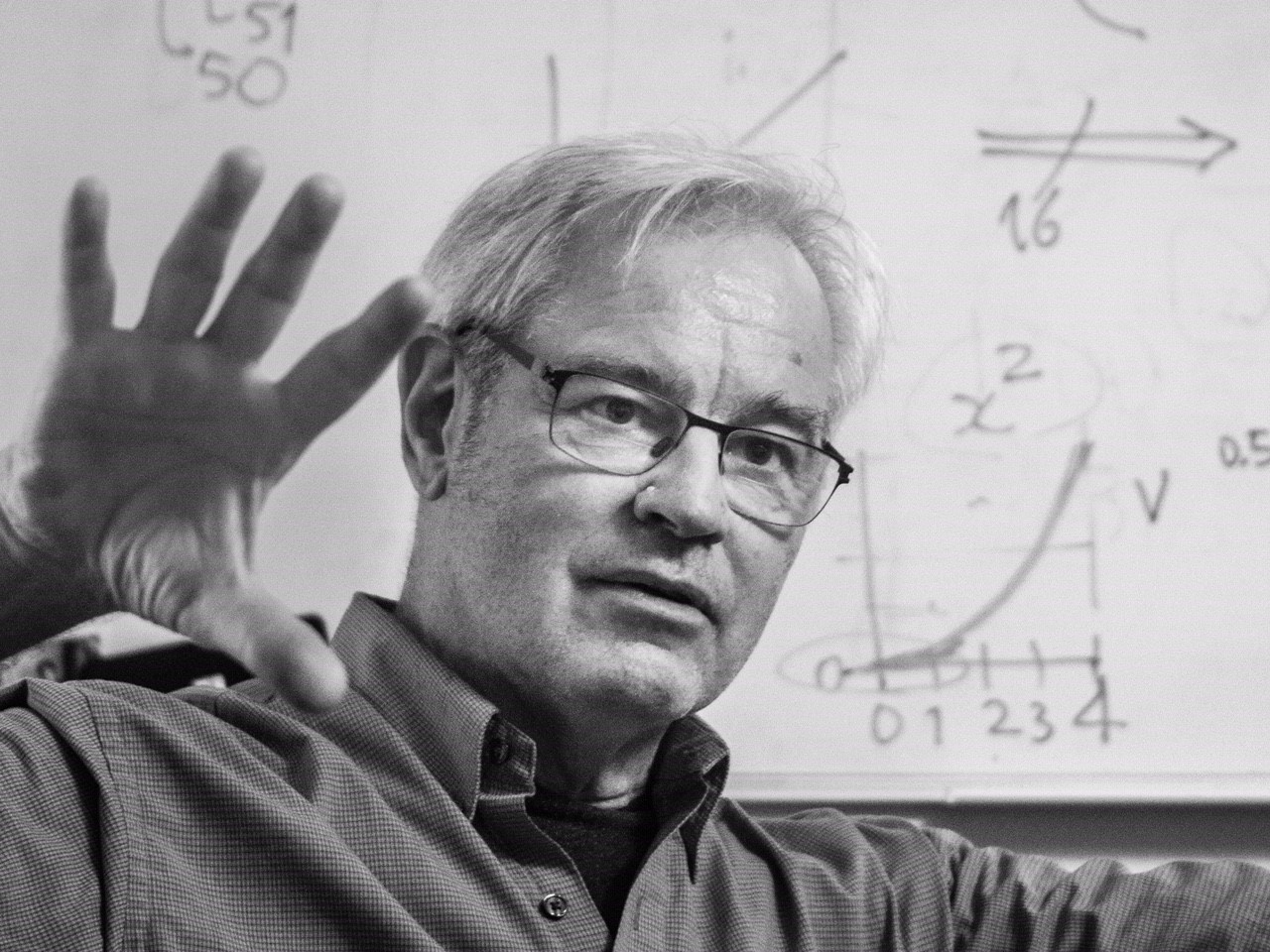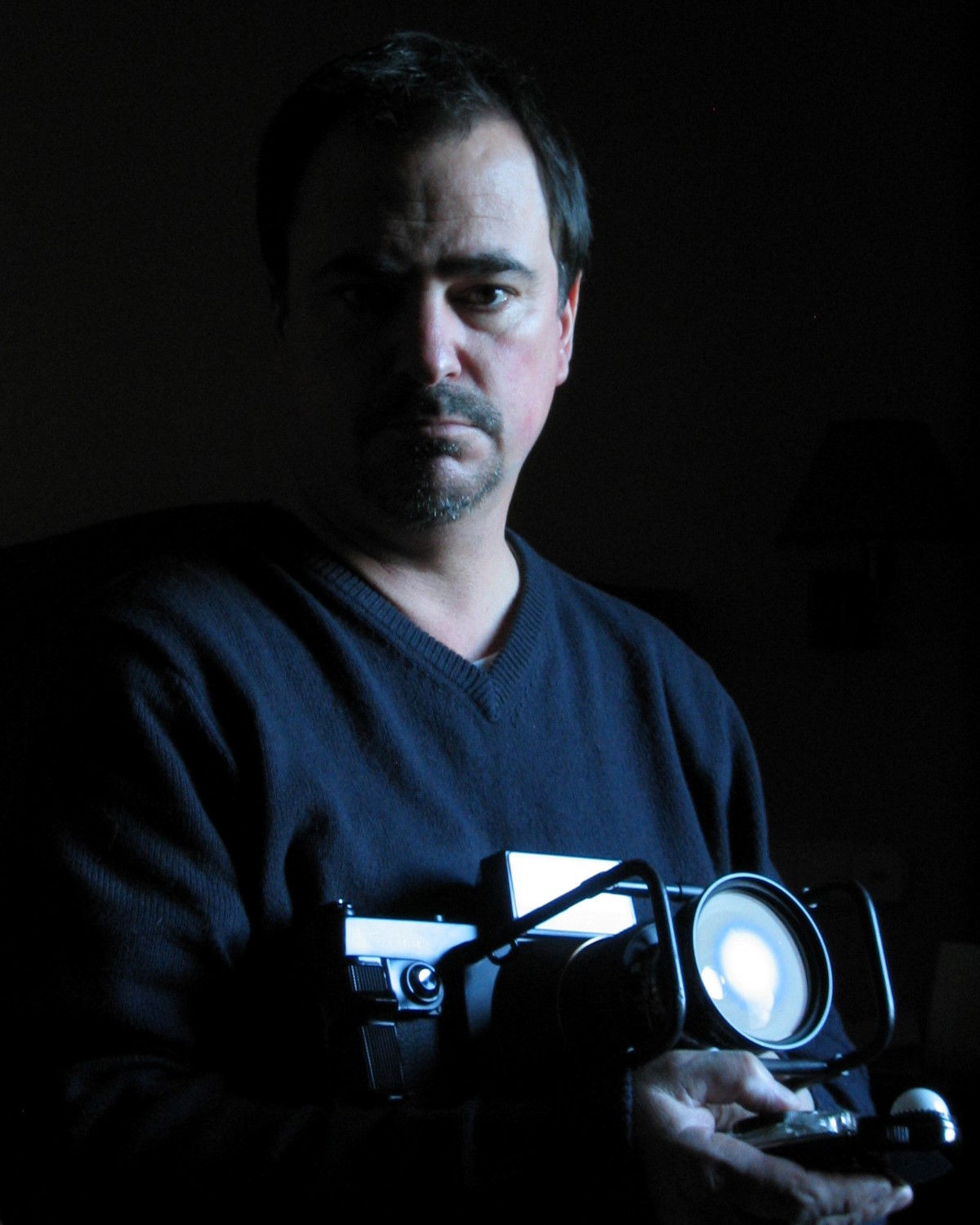Philippe Ros, AFC - France
Cinematographer, Digital Imaging Supervisor, Consultant and Instructor
The Digital Age with its incredible amount of new fantastic tools has become an odyssey of never-ending new approaches and new solutions. In this period in which creativity and confusion are sometimes closely intertwined, where answers on artistry and technology - as well as fake news - are often given through the internet, many young artists look for reliable ways to position and orientate themselves.
In the world of media expertise, considering the influence of the video game industry, regarding the mass of tools (virtual or real) which are currently used by professionals and consumers, respecting the new means of distribution and the employment of innovative display devices, the way how to educate young artists on visual arts and media productions has to be totally redesigned. The studies of the Visual Media Lab shall be dedicated to the needs of new teaching methods and to better understand the effects of various tools and technologies on storytelling and dramaturgy for time based media. To investigate how visuals contribute to storytelling we need independent research from creatives for creatives!
I do believe that the new institute VISUAL MEDIA LAB has a great potential to make a valuable contribution to the ongoing conversation on visual literacy. By conducting controlled experiments in studies and workshops a large number of creatives may benefit from an open-minded and adventurous educational environment.
Important experiences and findings were made in the « High Dynamic Range Studies » by Prof. Stefan Grandinetti et al., and the research results have led to reconsiderations of professionals and the industries in their approach of this new technology. The reliability and quality of the work provided a large and differentiated picture on the advantages and creative issues of HDR for professionals. The research of Prof. Katja Schmid about color, look and storytelling is of profound interest for filmmakers and media producers, facing major innovations in display technology. I am convinced that the Visual Media Lab will do major contributions to pave the way in the search of new educational and scientific methodologies we need now to face those challenges in Europe. I appreciate to have new partners for collaboration for aesthetic research conducted by artists and media practitioners. I wish the team a great start with their work!
Philippe Ros is:
- Member of the French Cinematographers Association (AFC)
- Co-chair of the Technology Committee of IMAGO (European /International Federation of Cinematographers - 53 countries)
- Member of the French Image and Sound Superior Technical Commission (CST)
- Honorary Member of the Canadian Society of Cinematographers (CSC)
Philippe Ros is specialized in hand held camera and ergonomics issues. He is fully acquainted with the digital shooting systems and the postproduction workflows linked to them.
He was Digital Imaging Director during five and a half years on OCEANS, film directed by Jacques Perrin and Jacques Cluzaud. His goal was to match underwater HD digital shots and 35 mm topside shots. With engineers he had to design several customized tools to achieve directors wishes. He was also cinematographer on underwater nights, tanks and microscope shooting on OCEANS.
He was Digital Imaging Supervisor on HOME directed by Yann Arthus-Bertrand, shot only in helicopters during 1 and a half year. For television, he was the cinematographer of the first five seasons of the series KAAMELOTT, directed by Alexandre Astier.
He recently achieved an European tour of 17 capitals to show a serial of 4 short demo films, «The Bot-Trilogy» shot in 4K with the help of Digimage and HDSystems. « The Bot-Trilogy » was financed by Leica and Sony, it was screened all over the world and became a reference on 4K digital workflow.
Beginning of 2016, he launched in Denmark, the CWC workshop (Camera, Workflow and Creativity) for cinematographers - next one will occur in Zurich. For filmmakers and actors he has designed with Joelle Sevilla - Acting Prod manager - the Creative Triangle workshop.
He is currently working as digital imaging supervisor for TV series and a serial of documentaries involving shooting in extreme low light conditions. As cinematographer, he is in preparation for feature films with an involvement from the first script, till the end of post-production. As well as documentaries where a customization of the digital tools is requested. He is currently making research on the texture in the 4K workflow. Simultaneously, he is delivering a lot seminars, workshops and conferences for professionals and students in the whole world.

Dr. Charles Poynton
Image Engineer and Scientist
The making of movies and television programing is multidisciplinary, involving art, craft, and science. What in Europe is called praxis is required, and also, theory. Being impressed by the work of several graduates of Hochschule der Medien Stuttgart, I applaud the establishment of the Visual Media Lab.
Dr. Charles Poynton is a Toronto-based independent contractor specializing in the physics, mathematics, engineering, and programming of digital colour imaging systems, including digital still cameras, digital video, HD/UHD/4K/8K (HDTV/UHDTV), VFX/CGI, and DI and digital cinema (D-cinema) systems. He is involved in engineering wide colour gamut (WCG, or wide gamut color) and high dynamic range (HDR) systems. He is an expert in colorspaces such as DCI P3 RGB, Adobe RGB 1998, ACES AP0/AP1, and BT.2020.
Also he does technology forecasting, systems modelling, algorithm development, video signal processing architecture, colour characterization and calibration, image quality assessment, and expert witness work in patent evaluations. While at Sun Microsystems in Mountain View, California, from 1988 to 1995, he initiated Sun's HDTV research project. He launched the effort that established square sampling ("square pixels") as the standard for HD, and thereby established the number 1080 now found in HD and d-cinema standards. Prior to joining Sun, Mr. Poynton designed and built the digital video equipment used by NASA to convert video from the Space Shuttle into NTSC for recording and distribution.
Mr. Poynton is a Fellow of the Society of Motion Picture and Television Engineers (SMPTE), in 1994 was awarded SMPTE's David Sarnoff Gold Medal. He has organized and presented many popular courses and seminars. He has published two editions of "Digital Video and HD Algorithms and Interfaces."

David G. Stump, ASC
Director of Photography, Visual Effects Supervisor, Stereographer
The authorship of images in the digital age has become a maze of almost endless possibilities. High Dynamic Range Imaging, Higher Frame Rate Imaging, Wide Color Gamut, Direct Display, and new developments in Computer Generated Imaging continue to evolve at a dizzying pace.
The freedom to choose in this new digital world places a new and heavy burden on creatives, the burden of education. The working creative is ultimately responsible to Directors, Producers, Studios and Investors to perform at the highest level, and learning to navigate this new freedom of choices, that can make the difference between success or failure. Creatives everywhere are now faced with the need to read, research, and more than anything else, understand the broad spectrum of techniques and tools available for their work in time based media. Creatives are now required to be equal parts as artists and technicians, painters and scientists, poets and accountants.
Education faces the task of providing the next generation of creatives with guidance, nurture and the technical discipline to equip them for the task. The Hochschule der Medien Visual Media Lab is an example of how to lead the next generation forward through study and research in order to achieve visual literacy and skills for the future.
David Stump ASC has been working in motion pictures and television production as Director of Photography, as Visual Effects Director of Photography, as Visual Effects Supervisor, and as Stereographer, (including both live action work and 2D to 3D conversion work), earning an Emmy Award, an Academy Award for Scientific and Technical Achievement and an International Cinematographers Guild Award. His credits include such high profile projects as American Gods, The Unwilling, Immortals, Quantum of Solace, The Resident, Flight Plan, Fantastic Four, X-Men 1 & 2, Into the Blue, Garfield, Batman Forever, Hollow Man, Men of Honor, Deep Blue Sea, Stuart Little, The Sphere, Contact, Batman & Robin, Mars Attacks, Executive Decision, Stargate, and Free Willy, among many others.
He is currently chairman of the Camera Subcommittee of the ASC Technical Committee, and a member of the AMPAS Science & Technology Council, where he chairs the Next Generation Cinema Technology Work Group, and participates in the AMPAS ACES project. Under his guidance, the combined efforts of the Producers Guild of America and the American Society of Cinematographers produced both the ASC / PGA Camera Assessment Series, and the ASC / PGA Image Control Assessment Series, side by side comparisons of virtually all of the high end digital cinema cameras against film.
He has lectured and taught classes in Cinematography and Visual Effects at the American Film Institute, UCLA, Art Center College of Design, Woodbury University, Arizona State University, Global Cinematography Institute, IATSE Local 600, TV Globo Rio De Janeiro Brasil, and recently Savannah College of Art and Design. He has spoken at many conferences and trade shows including the National Association of Broadcasters (NAB), the International Broadcast Convention (IBC), Cinegear Expo, DV Expo, the PGA Produced By Conference, the Hollywood Post Alliance Retreat, the Cinegrid Conference, the IMAGO Conference, the Lisbon Film Festival, the Todos En Alta Conference in Zaragoza Spain, and many others.
David authored the book Digital Cinematography Fundamentals, Techniques and Workflows, and was a contributing author to the "VES Handbook".